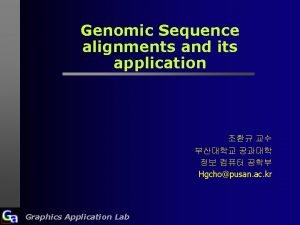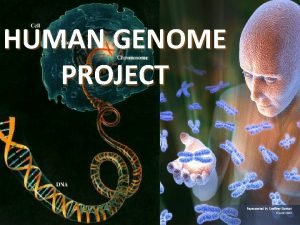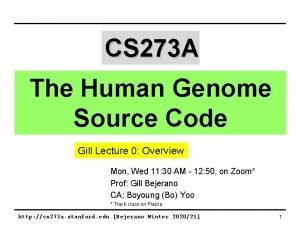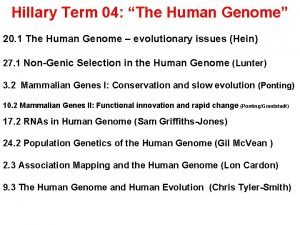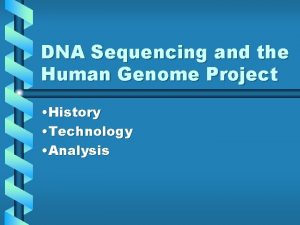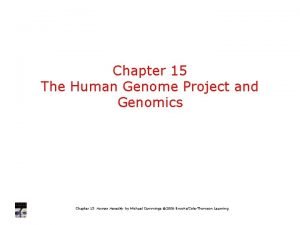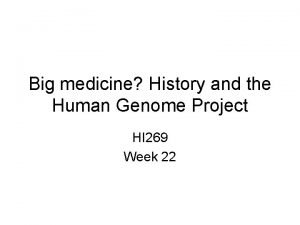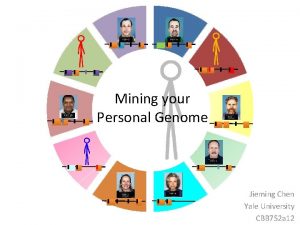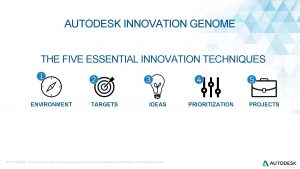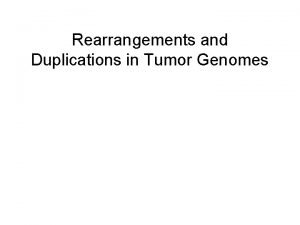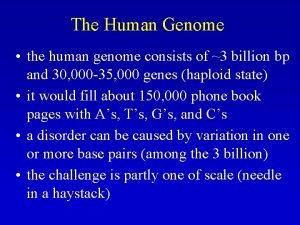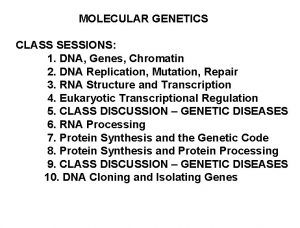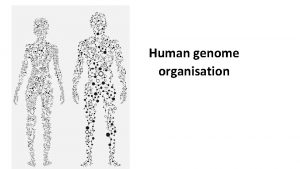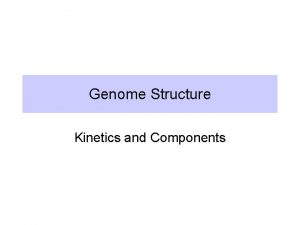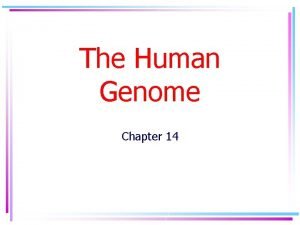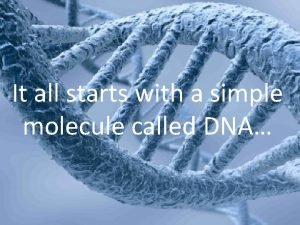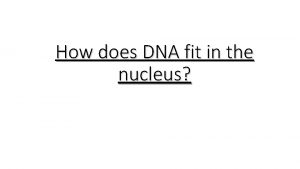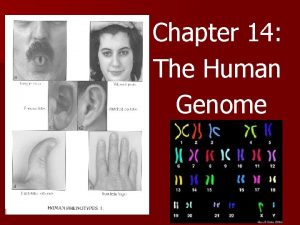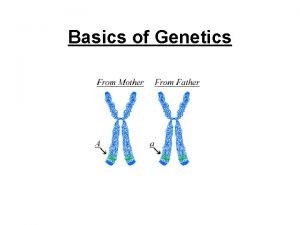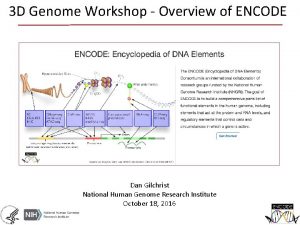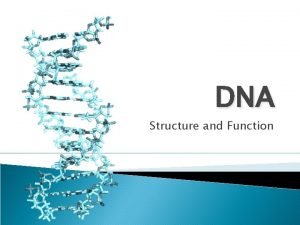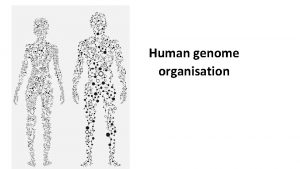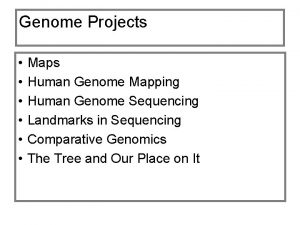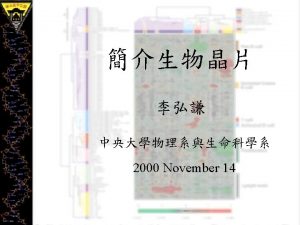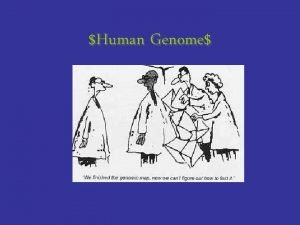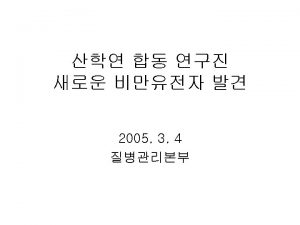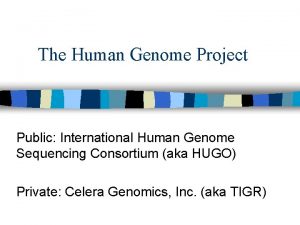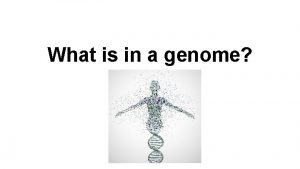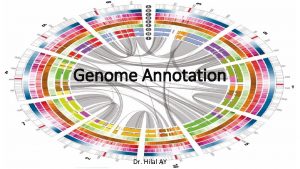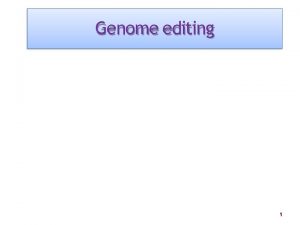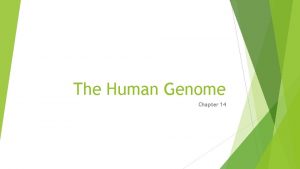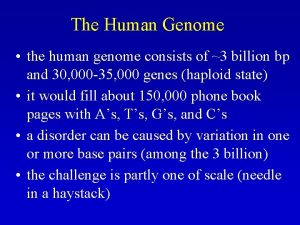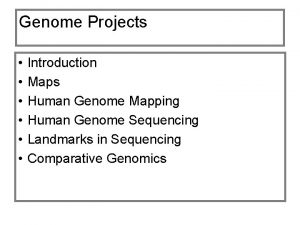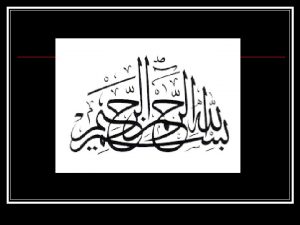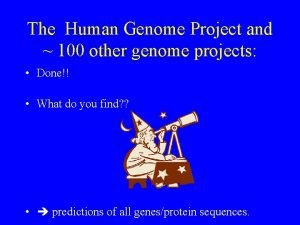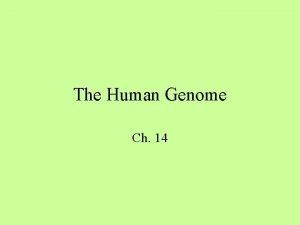HUMAN GENOME PROJECT At a glance The Human























- Slides: 23

HUMAN GENOME PROJECT

At a glance • The Human Genome – Salient Features of Human Genome • What was Human Genome Project(HGP) – – Milestones Goals of Human Genome Project Issues of concern Future Challenges • Vectors for Large-Scale Genome Project – Yeasts artificial chromosomes – Bacterial artificial chromosome – Difference between YAC and BAC

The Human Genome • The human genome is the complete set of genetic information for humans (Homo sapiens). • The human genome is by far the most complex and largest genome. • Its size spans a length of about 6 feet of DNA, containing more than 30, 000 genes. • The DNA material is organized into a haploid chromosomal set of 22 (autosome) and one sex chromosome (X or Y). Male Female

Human Genome Sequencing 2/11/2001 22 autosome + 2 sex chromosomes From NCBI

Salient Features of Human Genome: q Human genome consists the information of 24 chromosomes (22 autosome + X chromosome + one Y chromosome); in Homo sapiens 2 n = 2 x = 46 q The human genome contains over 3 billion nucleotide pairs. q Human genome is estimated to have about 30, 000 genes. q Average gene consists of 3000 bases. But sizes of genes vary greatly, with the largest known human gene encoding dystrophin containing 2. 5 million base pairs. q Only about 3 %of the genome encodes amino acid sequences of polypeptides and rest of it junk (repetitive DNA). q The functions are unknown for over 50% of the discovered genes. Continue………

q The repetitive sequences makeup very large portion of human genome. Repetitive sequences have no direct coding function but they shed light on the chromosome structure, dynamics and evolution. q Chromosome 1 has most genes (2968) and Y chromosome has the lowest (231). q Almost all nucleotide bases are exactly the same in all people. Genome sequences of different individuals differ for less than 0. 2% of base pairs. Most of these differences occur in the form of single base differences in the sequence. These single base differences are called single nucleotide polymorphisms (SNPs). One SNP occurs at every ~ 1, 000 bp of human genome. About 85% of all differences in human DNAs are due to SNPs.

Human Chromosome 1 Genetic Map

What was Human Genome Project(HGP) • The Human Genome Project was an international research effort to determine the sequence of the human genome and identify the genes that it contains. • The US Human Genome Project is a 13 year effort, which is coordinated by the – Department of Energy (DOE) and – National Institutes of Health (NIH).

Milestones 1986 The birth of the Human Genome Project. 1990 Project initiated as joint effort of US Department of Energy and the National Institute of Health. 1994 Genetic Privacy Act: to regulate collection, analysis, storage and use of DNA samples and genetic information is proposed. 1996 Welcome Trust joins the project. 1998 Celera Genomics (a private company founded by Craig Venter) formed to sequence much of the human genome in 3 years. 1999 Completion of the sequence of Chromosome 22 -the first human chromosome to be sequenced. 2000 Completion of the working draft of the entire human genome. 2001 Analysis of the working draft are published. 2003 HGP sequencing is completed and Project is declared finished two years ahead of schedule.

Goals of Human Genome Project 1. To identify all the genes in human DNA. 2. To develop a genetic linkage map of human genome. 3. To obtain a physical map of human genome. 4. To develop technology for the management of human genome information. 5. To know the function of genes. 6. Determine the sequences of the 3 billion chemical base pairs that make up human DNA. 7. Store this information in public databases. 8. Develop tools for data analysis. 9. Transfer related technologies to the private sectors.

ISSUES OF CONCERN Ethical, Legal and Social issues of the Human Genome Project • • • Fairness in the use of genetic information. Privacy and confidentiality of genetic information. Psychological impact, stigmatization, and discrimination. Reproductive issues. Clinical issues. Uncertainties associated with gene tests for susceptibilities and complex conditions. Fairness in access to advanced genomic technologies. Conceptual and philosophical implications. Health and environmental issues. Commercialization of products. Education, Standards, and Quality control. Patent issues.

Future Challenges: What We Still Don’t Know 1. Gene number, exact locations, and functions 2. Gene regulation 3. Chromosomal structure and organization 4. Non-coding DNA types, amount, distribution, information content, and functions 5. Coordination of gene expression, protein synthesis, Proteomes and post-translational events 6. Predicted vs experimentally determined gene function 7. Evolutionary conservation among organisms 8. Disease-susceptibility prediction based on gene sequence variation 9. Genes involved in complex traits and multigene diseases 10. Developmental genetics, genomics

Vectors for Large-Scale Genome Project q A vector is a DNA molecule that has the ability to replicate in an appropriate host cell, and into which the DNA insert is integrated for cloning. q A vector must have a origin of DNA replication (ori). q The vector is a vehicle or carrier which is used for cloning foreign DNA in bacteria. q For genome sequencing, first DNA fragments of the genome must be cloned in appropriate vectors. Two of the most popular vector: 1. Yeast artificial chromosomes (YACs) and 2. Bacterial artificial chromosomes (BACs)

Yeasts artificial chromosomes (YACs): Yeast artificial chromosomes (YACs) are genetically engineered chromosomes derived from the DNA of the yeast, Saccharomyces cerevisiae, which is then ligated into a bacterial plasmid. • YACs were very useful in mapping the human genome because they could accommodate hundreds of thousands of kilo bases each. • YACs containing a mega base or more are known as "mega YACs. " A YAC can be considered as self replicating element, because it includes three specific DNA sequences: 1. TEL: The telomere which is located at each chromosome end, protects the chromosome's ends from degradation by nucleases. 2. CEN: The centromere which is the attachment site for mitotic spindle fibers and necessary for segregation of sister chromotids to opposite poles of the dividing yeast cell. The centromere is placed in adjacent to the left telomere, and a huge piece of human (or any other) DNA can be placed in between the centromere and the right telomere. Continue………

3. ORI: Replication origin sequences which are specific DNA sequences that allow the DNA replication. It also contains few other specific sequences like: ØSelectable markers (A and B) that allow the easy isolation of yeast cells that have taken up the artificial chromosome. ØRecognition site for the two restriction enzymes Eco. RI and Bam. HI.

Cloning genomic DNA into a YAC 1. Genomic DNA is partially digested with a restriction enzyme (Eco. RI). 2. The YAC is digested by the two restriction enzymes Eco. RI and Bam. HI. 3. Those two elements recombine at the Eco. RI sites of YAC and are covalently linked by the DNA ligase. 4. A recombinant YAC vector, a yeast artificial chromosome with genomic DNA inserted, is produced. Then YACs vector can be introduced into yeast cells and generated an unlimited number of copies. Fig: Cloning of genomic DNA into a YAC

Bacterial artificial chromosome (BAC) A bacterial artificial chromosome (BAC) is an engineered DNA molecule, used to clone DNA segment in bacterial cells (E. coli). It is based on a well-known natural F plasmid (inhabits E. coli cells). This plasmid allows conjugation between bacterial cells. • Segments of an organism's DNA, ranging from 150 to about 300 kilo base pairs, can be inserted into BACs. • These vectors are able to maintain in stable state in vivo and in vitro. • Their copy number is about two per cell. • Extensively used in analysis of large genomes but the main disadvantage of BAC vectors is some what laborious construction of BAC libraries.

Common gene components Bacterial artificial chromosome is another cloning vector system in E. coli (p. BAC 108 L), developed by Melsimon and his colleagues in 1992, have q Hind. III and Bam. HI: the cloning sites q Cm. R: the chloramphenicol resistance gene, used as a selection tool. q ori. S: the origin of replication q rep. E: for plasmid replication and regulation of copy number. q Par. A and Par. B: the genes governing partition of plasmids to daughter cells during division and ensures stable Fig: Map of the BAC vector, p. BAC 108 L maintenance of the BAC.

Cloning genomic DNA into a BAC 1. Genomic DNA is isolated from a desired source and used restriction enzymes to cleave the target DNA into fragments. 2. The BAC is digested by restriction enzymes in the cloning sites Hind. III and Bam. HI. 3. Those two elements recombine by the DNA ligase and attach into a host bacterium. 4. As the bacterial cells grow and divide, they amplify the BAC DNA, which can then be isolated and used in sequencing DNA. Fig: BAC as a Cloning vector

Difference between YAC and BAC as vector of genome sequencing Yeast artificial chromosomes (YACs) 1. Yeast artificial chromosomes (YACs) are genetically engineered chromosomes derived from the DNA of the yeast, Saccharomyces cerevisiae. 2. YAC’s are used for cloning very large (1000 -2000 kb) DNA segments. 3. They are inefficient. 4. Unlike BAC library, it is not so hard to construct YAC library. 5. They are unstable. 6. They tend to contain scrambled inserts, i. e. composites of DNA fragments from more than one site. 7. The linear YACs, which tend to break under shearing forces. 8. They are hard to isolate from yeast cells. Bacterial artificial chromosome (BAC) 1. A bacterial artificial chromosome (BAC) is an engineered DNA molecule, used to clone DNA segment in bacterial cells (E. coli). 2. These vectors are used to clone the DNA inserts up to 300 kb. 3. They are inefficient. 4. It is very hard to construct BAC library. 5. They are more stable. 6. They contain pure inserts. 7. The circular, super coiled BACs resist breakage. 8. They are easy to isolate.

RECAP Q 1. Expand the following: A)YAC B)BAC Q 2. Which chromosome of human being has highest number of genes? • Q 3. Which chromosome of human being has least number of genes? • Q 4. Which year actually Human genome project completed? • •

CONCEPT MAP Goals of HGP │ ____________________ I I Identify genes in Determine the sequence Store the information Improve tools Transfer related Adress Human DNA 0 f 3 billion basepairs in databases for Data analysis technologies to other ELSI sectors such as industries

THANKS TO ALL From My core of Heart AJIT KUMAR SAHOO PGT, BIO(KV NO. 1, SAMBALPUR) ajitkumarsahooblog. wordpress. com
 Genome-to-genome distance calculator
Genome-to-genome distance calculator Future of human genome project
Future of human genome project Human genome project source code
Human genome project source code Human genome project code
Human genome project code History of sequencing
History of sequencing Chapter 15
Chapter 15 Human genome project
Human genome project Genome.gov
Genome.gov Alternate splicing
Alternate splicing Innovation genome project
Innovation genome project Genome project
Genome project Human genome consists of
Human genome consists of Human genome size
Human genome size Human genome size
Human genome size Genome organization
Genome organization Repeated sequences
Repeated sequences Chapter 14 the human genome making karyotypes answer key
Chapter 14 the human genome making karyotypes answer key National human genome research institute
National human genome research institute National human genome research institute
National human genome research institute Chapter 14 the human genome
Chapter 14 the human genome National human genome research institute
National human genome research institute National human genome research institute
National human genome research institute Biologists search the volumes of the human genome using
Biologists search the volumes of the human genome using Who discovered the structure of dna
Who discovered the structure of dna
